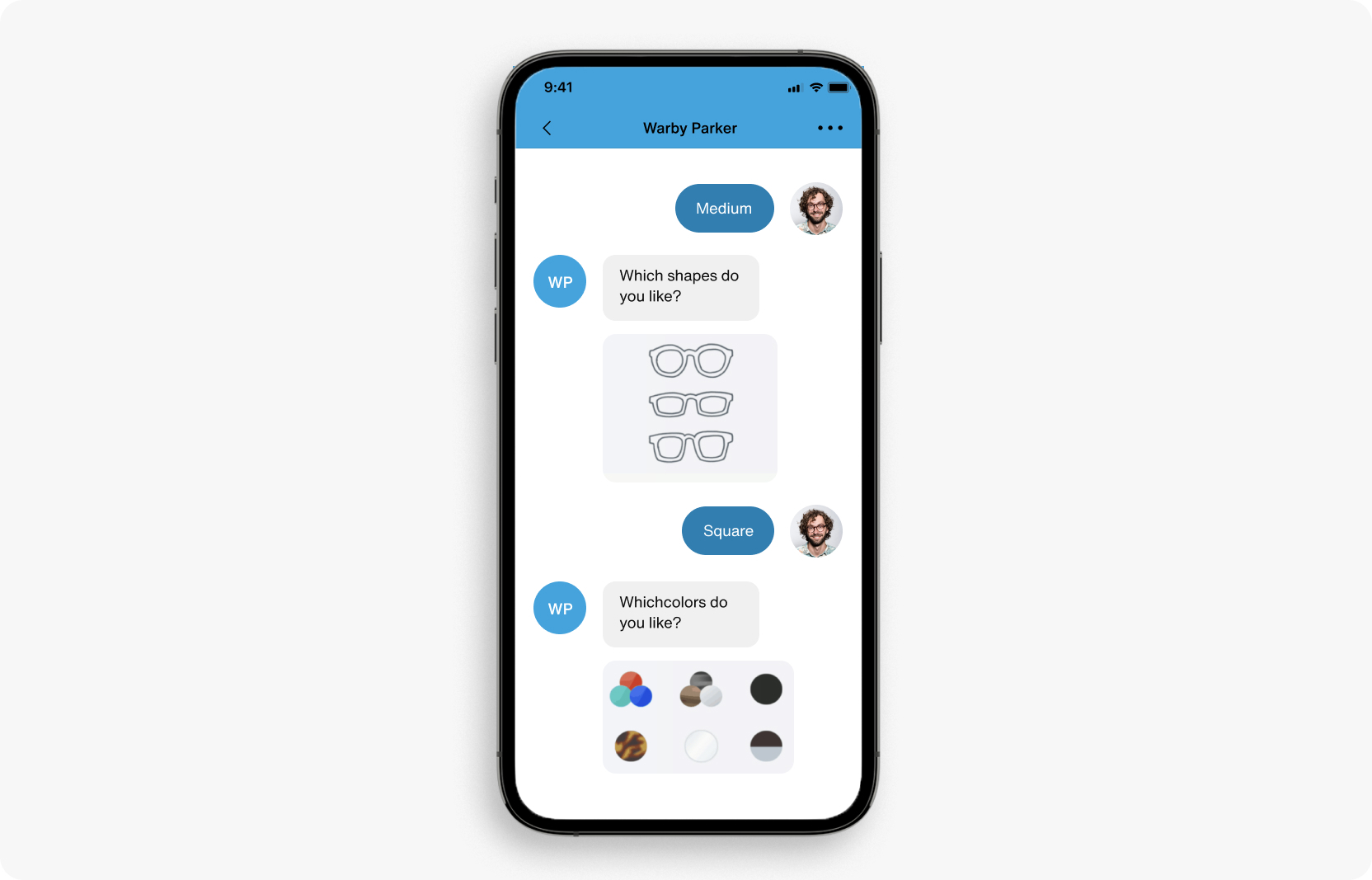The necessary evil of omnichannel communication

You just received a text from a clothing brand: SALE 35% OFF. You get an email about a furniture shipment that’s out for delivery. As you open your email, a push notification from a marketplace alerts you that the seller has finally responded to your message.
Customers are used to receiving business communications over multiple channels, making it hard to track business communications and sometimes adding necessary friction.
Businesses also risk spamming their users through multiple channels. Hopefully, your customer has subscribed to their method of choice. Still, customer communications are most valuable when they add value to your business and the customer’s experience.
You can’t communicate your newest product offering and ebook launch in a tweet, and emails are better used for longer messages (Imagine a company sending a 280-character email to their entire list with just a link attached).
Not all communication channels are created equal, but relying only on one makes growth impossible. This is the necessary evil of omnichannel.
An omnichannel strategy is the gold standard for businesses that understand their customers are everywhere and want to move seamlessly between channels and experiences. Omnichannel communication establishes the importance of customer communication — across sales, marketing promotions, transactions, support, and other stages in the customer journey — so every omnichannel touchpoint feels personal, easy, and connected.
What is omnichannel communication?

Omnichannel communication happens when a business delivers a consistent experience across any customer touchpoint. Whether used for omnichannel customer service, lead generation, or user engagement, this holistic approach to customer communications helps to ensure that products, offers, and support services are delivered to customers in a way that's seamless, reliable, and conveniently accessible across all brand channels in the same voice and experience.
These channels could include websites, apps, SMS, social messengers like WhatsApp, email, live chat, and even physical channels such as kiosks and stores. But none of these channels means anything unless they interact to provide personalized support or offer something no other channel can.
For this blog, we’ll be focusing on digital omnichannel communication.
What does an omnichannel communication strategy look like?
To create and execute a successful omnichannel communication strategy, you must identify the communication channels you already use. Discuss with your team if there are any missed opportunities:
- Could you answer more support questions over social?
- Do you have the personnel to maintain live chat?
- How many leads are coming in through email?
- Are you missing in-app messaging that could bridge the gap between business-to-customer interactions and customer-to-customer chat?
Understanding your buyers’ journey will also help you determine your audience’s preferred channels at each stage, which can vary from industry to industry.
Once you’ve identified your channels, you must develop a brand voice. Whether you’re marketing a new product or offering support on any of these channels, consistency is key to building trust with customers.
These channels should also be timely, so customers don’t message an agent and wait an hour for a response or visit your social platforms to see that you haven’t posted in three months.
Finally, you must set, understand, and communicate your KPIs for each channel with your team. The odds are that you have some channels that reach more customers than others. Spending more time and resources on these channels might make more sense if they drive more business, but maybe you want to grow your contact list in new channels.

Elevate in-app engagement eBook
Examples of channels to include in your multichannel communication strategy
You are likely already familiar with email, social media, and SMS. And given a choice, most businesses want personal, engaging, and convenient ways to communicate with their customers that build new relationships and drive loyalty.
This is why in-app messaging is becoming another popular communication channel for businesses to add to their omnichannel strategy. It allows businesses to have personal and ongoing conversations with customers — with customer data that stays native.
SMS
SMS stands for short message service, the most common form of text messaging. It has a 160-character limit and can basically only consist of text.
Today, SMS is not just used between friends and family but also widely used in application-to-person (A2P) messaging, which enables businesses to contact their customers by sending a text from their application using an SMS API. One of the most common examples is the code your bank sends you when you try to log in from a new device.
SMS makes it difficult for users to know the sender’s identity, making communication feel impersonal and difficult to trust. SMS has also become rife with phishing scams, raising concerns about its effectiveness, especially when users are expected to tap on links.
Average email click rates have dropped to 1.39%, forcing marketers to think about new channels to reallocate their acquisition spends on. As a channel for support, email is too slow. If a customer interacts with a brand through a form and is redirected to an email with a 24-hour response SLA, realize that the customer is experiencing friction and will go to a competitor who provides a faster experience.
While email is great for a lot of things, like content newsletters and longer-form internal communication, as an outward-facing channel, it has diminishing returns.
Live-chat
With live chats there is an expectation of agents to be ‘live’ on the chat — putting a huge burden on your business. On the other hand, if the customer gets distracted during a live chat, the chat might time out, disconnecting the customer and making them wait for the next available agent only to repeat their issue.
Because live chats are typically session-based, even though a customer might have been a customer for years, every time they start a new chat, it’s like meeting the customer for the first time.
That said, live chat can be useful for easy-to-answer support questions.
Chatbots
Chatbots are software applications that simulate human conversation. Chatbots follow a set of pre-determined rules or questions that mimic real-life interactions to answer customer questions or lead them to an asset on your website or app.
Chatbots can be guided through logic or AI, and are used in many use cases from support to content marketing. Chatbots are great for web, and sometimes mobile marketing, but exist as an in-platform channel.
Social media
Everyone knows the power of social. From Instagram leading to an increase in brand-fueled UGC to Duolingo taking over TikTok, social exists as a right-of-passage marketing channel that few modern brands are immune to.
Some businesses use social media as an added support channel, HubSpot being a great example.
Social allows brands to interact with their audience in a personal and brand-relevant way. The hard part is getting people to listen.
Push notifications
Coupled with in-app messaging, push notifications can bring users back into your app and remind them of what’s left in their cart, alert them of a promotion or delivery time, or bring them back to socially engage with other users.
If users have their push notifications on, they can receive notifications from your app anytime. Push notifications are a great alternative to SMS, as they allow for media-rich communication and can side-step federal messaging regulations and costs.
In-app messaging
In-app messages are messages delivered to your users while they are active in your mobile app. Usually, in-app messaging features rely on push notifications to bring users back into the platform.
In-app messaging connects businesses with customers personally, creating a sense of connection — that immediately inspires confidence and trust in the business.
Omni channel communications example

Warby Parker makes shopping for glasses engaging. Customers can be guided to personalized chat or a virtual try-on for a unique retail experience when shopping in-app. They even have a quiz to determine your personal style.
After trying a few glasses on virtually, customers may receive a follow-up email from the brand reminding them that a free, at-home trial period is available for five of the pairs they liked.
When scrolling on Instagram, you see a promotional post for one of the glasses you ordered for that at-home trial, which makes you even more excited to receive them in person.
Omnichannel is important because it allows Warby Parker's retail communication strategy to live on in every touchpoint. Any customer communication strategy should involve as many touchpoints as possible, not only to remind the customer of your value but to get them excited and engaged with your brand.
Why is omnichannel important?
It is difficult to pay attention to multiple channels and deliver a consistent customer experience across them. But as messaging experts, we can’t tell you to focus only on one. Here's why:
More consistent customer data
To gain consistent customer data, businesses can use an omnichannel communication strategy to track and analyze customer interactions and preferences across all channels. By using a variety of channels, companies can gain a more comprehensive understanding of their customers and their needs. This data can be used to improve marketing campaigns, personalize the customer experience, and make informed business decisions.
For example, by tracking and engaging with customer interactions across all preferred channels, businesses can identify the most effective channels for engaging customers and tailor their communication strategy accordingly. Using an omnichannel approach, companies can gain a more complete and consistent picture of their customers and use this data to make more informed decisions.
Improve CSAT metrics
An omnichannel communication strategy can help businesses improve customer satisfaction metrics through convenience, personalization, speed, and enhanced customer support.
By providing customers with multiple options for contacting the business and addressing their concerns, companies can make it easier for customers to interact with them and resolve issues, leading to increased satisfaction and loyalty. Customer data can then help further personalize customer service interactions.
Meet customers where they are
Nobody wants to shout into the void. An omnichannel engagement and support strategy aims to bring business communications directly to customers, but for this to be successful, you must consider not only where your customers are but also how they are.
The tone of a social post can vary significantly from that of a push notification or SMS message. Knowing what your customer is expecting out of a channel, in addition to occupying that channel in the first place, is the key to engagement.
Higher return on investment (RoI)
Better customer relationships lead to increased sales, customer retention, enhanced marketing efficiency, and cost savings.
It’s no surprise that businesses can increase sales and revenue by effectively reaching and engaging with customers through multiple channels.
Omnichannel communications offer many points to deliver value to your customers.
Businesses can enhance marketing efficiency by using customer data to tailor marketing campaigns and focus resources on the most effective channels.
In-app messaging works with your omnichannel communication strategy
The channel comparisons: Push notifications vs email, SMS vs in-app messaging, SMS vs email, are unlimited. An omnichannel point-of-view is the way to go for a modern customer messaging strategy.
At Sendbird, we’re big on how in-app messaging amplifies customer engagement, increases sales, and eases communication. Businesses that add in-app messaging to their omnichannel service strategy utilize the importance of messaging to the modern consumer.
Give our messaging demos a try today, and see Sendbird in action.









